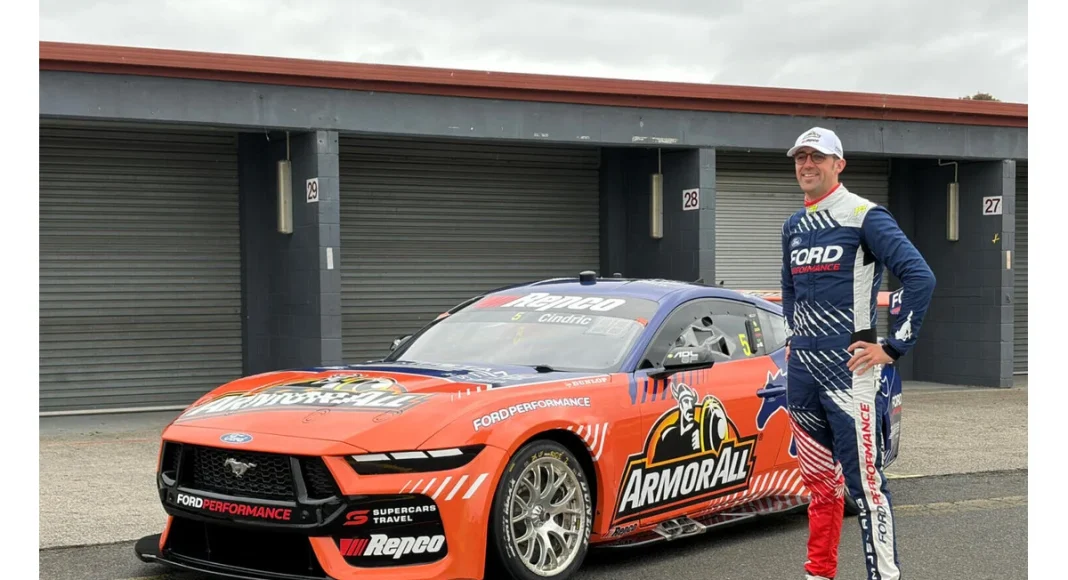Austin Cindric, Team Penske NASCAR driver, has placed the spotlight on the Austin Cindric Gen3 Supercars comparison after testing the Gen3 Ford Mustang at Sandown Raceway ahead of the Adelaide Grand Final. His candid feedback about the new Australian machine, given just before his wild card entry, emphasizes the contrasts and emerging debates between Gen3 Supercars and NASCAR‘s Next Gen cars, a discussion reverberating across both racing communities as drivers seek answers about competitiveness and performance.
Cindric Experiments Down Under With Gen3 Mustang
Fresh from his initial laps in the Gen3 Ford Mustang at Sandown, Austin Cindric dove into the challenges of familiarizing himself with the new Supercars platform, solidifying his preparation for the Adelaide Grand Final from November 27 to 30. At age 27, Cindric entered the Repco Supercars Championship as a wild card, stirring interest far beyond his regular NASCAR circles. While the Gen3 car brought excitement, it also prompted the outspoken American to directly compare these cars with NASCAR’s next-generation vehicles, exposing differences that are drawing increasing attention from global fans and paddock insiders alike.
The Gen3 Ford Mustang, lighter by roughly 100 kg compared to NASCAR’s Cup cars, grants more overbody downforce, significantly improving tire grip. This difference is particularly notable on technical circuits like Sandown, where aggressive driving over the kerbs can define winning laps or costly mistakes. Cindric himself remarked during his review with V8 Sleuth,
“The current generation Cup car is a lot more rigid,”
Austin Cindric, Team Penske NASCAR driver. He continued,
“Like, I’ve really had to talk myself into using the kerb as much as I can with this car. Yeah, it has a bigger effect on the driver, but the car still stays gripped up, whereas if I hit some of these kerbs in a Cup car, I’d be in the blue tent!”
Austin Cindric, Team Penske NASCAR driver.
This hands-on insight touched on shared traits between Gen3 and Next Gen cars, especially regarding rear tire grip while braking. Yet, Cindric described how the less rigid chassis of the Gen3 allows for more audacious pushes by the driver, reducing the trepidation associated with potential spins. Cindric’s practice laps and focus on adapting to the Gen3 style during post-Sandown ride days underscored his intent to master the different techniques required before his race debut, as he was out of qualifying runs.
Testing the Parity Narrative Between Gen3 and NASCAR Next Gen
Since its 2022 rollout, NASCAR’s Next Gen car aimed to establish parity across teams with controlled costs and standardized parts. However, after three championship seasons, critics have noted that top teams like Penske and Hendrick Motorsports maintain their advantage, leveraging superior resources to eke out greater setup and simulation gains. Cindric’s experiences highlight this challenge, as his comparison points to how Gen3’s rules and format prevent the competitive gap from widening too far — enabling closer, riskier, and more dramatic on-track battles rather than cementing dominance through resource disparity.
Cindric’s foray as the first full-time regular from NASCAR to participate in the Supercars series since Bathurst’s Cup cameos in 2019 sets a precedent that might inspire further cross-participation. His honest admissions regarding car feel and racing philosophy could tempt additional Cup Series peers eager for a taste of the Supercar experience and its fan-focused spectacle. For Cindric himself, the lure of challenging competition and personal growth off American tarmac was also shaped by witnessing other international successes in stock-car racing.
International Influence: SVG’s Road Course Success Inspires NASCAR Drivers
Shane van Gisbergen, known as SVG, has made a seismic impact on NASCAR road courses since joining Trackhouse Racing full-time in 2024. The New Zealander’s record — five wins from six rookie road course starts — has energized conversations in NASCAR garages and escalated interest in Supercars cross-pollination. SVG’s prowess is often attributed to his Supercars background, particularly with the type of technical circuits found at venues like Sonoma and the streets of Chicago, where precise handling and experience with complex tracks provide a performance edge.
Cindric acknowledged SVG’s role in shifting awareness of Australian Supercars among Cup Series drivers, stating,
“I think the fact that he’s kicking everybody’s ass on road courses makes them more aware of Supercars. That’s the bottom line.”
Austin Cindric, Team Penske NASCAR driver.
The Kiwi’s dominance has opened doors and inspired other NASCAR drivers to seek similar wildcard entries, aiming to broaden their skill sets and experience. Road course excellence and international cameos, such as Scott McLaughlin’s, have nudged drivers to consider invitations to events like Adelaide with Tickford Racing. Cindric, a lifelong enthusiast of the category, said,
“I mean, I’ve been aware of the championship my whole life and been a big fan,”
Austin Cindric, Team Penske NASCAR driver, continuing,
“but as far as within our industry, I think you take an awareness any time you’re getting beat.”
Austin Cindric, Team Penske NASCAR driver.
Beyond racing itself, opportunities for crossovers now feature networking benefits, new sponsor meetings, and unique family experiences abroad, as seen in Cindric’s three-week Australian journey. His example could pave the way for other Cup regulars, such as Kyle Larson, to venture into Supercars competition and return with valuable insights to their home circuits.
Looking Ahead: Impact and Future for Gen3 and NASCAR Next Gen Debate
The Austin Cindric Gen3 Supercars comparison brings greater context to the evolving conversation about global touring car platforms. By offering a transparent view of car characteristics and racing dynamics, Cindric’s experience is fueling curiosity and encouraging open dialogue among both drivers and fans. The differences between the Australian Gen3’s setup, with its increased agility and grip, and the American Next Gen focus on cost control and parity, reveal the delicate balance each series attempts to strike between spectacle, competition, and opportunity.
Ultimately, the willingness of major drivers like Cindric to participate internationally could add an emotional and competitive edge to both championships, encouraging technical progress and a cross-pollination of talent. As other veterans, rookies, and sports fans watch this trend build, the mutual influence of championship formats could foster improvements in both Supercars and NASCAR, strengthening the depth and diversity of motorsport for years to come.
https://twitter.com/V8Sleuth/status/1990253414979338409


